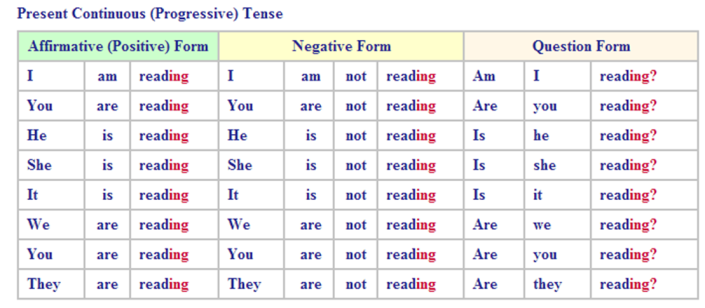English Class
Ludy Fernández Preparatoria 9 UANL
Monday, November 6, 2017
STAGE 4 -GRAMMAR SECTION
Lesson 1: Countable and Uncountable Nouns.
- What is a Noun?
A noun is a word that identifies a person, animal, place, thing, or idea.
We can classify nouns into countable or uncountable.
Countable nouns can take singular or plural form.
-A carrot (singular) -Four carrots (plural)
-A peach (singular) - Two peaches (plural)
|
Uncountable nouns take always singular form.
Milk Cheese Sugar Cereal Rice Honey Flour Salt
|
Food Classification:
- Singular to Plural Form
Most singular nouns are made plural by simply putting an -s at the end. However, there are many different rules regarding pluralization depending on what letter a noun ends in. Irregular nouns do not follow plural noun rules, so they must be memorized or looked up in the dictionary.
- QUANTIFIERS
A quantifier is a word or phrase which is used before a noun to indicate the amount or quantity.
PRACTICE 1: Choose the appropriate quantifier: a, an, some, any, much, many, a lot of.
Lesson 2: How many / How much?
We ask HOW MANY and HOW MUCH when we want to know the quantity or amount of something.
- HOW MANY + PLURAL COUNTABLE NOUN
- HOW MUCH + UNCOUNTABLE NOUN
Lesson 3: There is / There are
We use there is and there are to say that something exists (or doesn’t exist).
Sunday, November 5, 2017
STAGE 4 YOU ARE WHAT YOU EAT
Student’s Book
- Grammar- countable and uncountable nouns
- Vocabulary- food
Lesson 2: What´s on your shopping list?
- Grammar-some, any, few, little, there is/there are
- Vocabulary-food, containers and measurements
Lesson 3: How much is it?
- Grammar-much/many
- Vocabulary-supermarket sections, prices
Lesson 4: What´s your favorite recipe?
- Grammar-irregular plurals
- Vocabulary-recipes, ingredients, preparation and cooking
Lesson 5: Grammar focus
- Grammar-countable and uncountable nouns
- Vocabulary-food
- Final Review
- Test yourself
Student’s Guide
- Diagnostic Activity
- Knowledge Acquisition Activity- Hierarchy and Organization Activity
- Application Activity
- Metacognitive activity (Nexus)
- Integrative activity
Tuesday, October 10, 2017
STAGE 3.- PRESENT PROGRESSIVE OR CONTINUOUS
Grammar Focus:
USES:
We use the present progressive or continuous tense to talk about:
- actions happening now or at the moment of speaking.
- actions happening for a short period of time.
- actions taking place in a near future.
SIGNAL WORDS
- at the moment
- now / just now / right now
- Listen!
- Look!
STRUCTURE

SPELLING RULES
1. Verbs that end with one -e, drop the -e and add -ing. Note that these verbs the -e sound at the end is silent. (e.g., believe, bake, take, move).
- achieve — achieving
- live — living
- take — taking
- strike — striking
- bike — biking
- make — making
- have — having
- dance — dancing
Verbs ending with a long -e sound, add -ing as you normally would.
- see — seeing
- be — being
- flee — fleeing
- agree — agreeing
2. Short one-syllable verbs ending in CVC (a consonant + vowel + consonant), we double the final consonant before adding the -ing ending:
- sit — sitting
- get — getting
- pet — petting
- plan — planning
- run — running
- put — putting
- stop — stopping
- trim — trimming
- win — winning
Notice these verbs end in CVC (consonant vowel consonant). However, do not double the consonant for verbs that end in w, x or y.
Verbs ending in w, x and y
- blow — glowing
- row — rowing
- snow— snowing
- stay — staying
- tax — taxing
- play— playing
3. When verbs ending in ending in CVC (consonant vowel consonant) have two or more syllables, double the last consonant if the last syllable is stressed.
- begin — beginning (be / GIN = the last syllable is stressed)
- forget — forgetting (for / GET = the last syllable is stressed)
- upset — upsetting
- regret — regretting
- prefer — preferring
- admit — admitting
However, when the last syllable is not stressed, just add -ing as usual.
- benefit — benefiting ( be / NE / fit = second syllable is stressed not the last)
- happen — happening (HAPP / en = first syllable is stressed not the last)
- open — opening
- listen — listening
4. Verbs ending in -ie . If a verb ends in -ie change 'ie' to 'y' then add -ing.
- die — dying
- lie — lying
- tie — tying
________________________________________________________________________
Watch these videos and write at least
10 actions that are happening in the videos
PRACTICE # 1
PRACTICE # 2
VOCABULARY STAGE 3
- CLOTHES AND ACCESSORIES
_____________________________________________________________________
- WEATHER CONDITIONS
_____________________________________________________________________
- VACATION ACTIVITIES
STAGE 3
Stage 3: I Can Describe Ongoing Actions
Student’s Book
Lesson 1: Are you having fun?
- Grammar-present
progressive , yes/no questions
- Vocabulary-
vacation activities
Lesson 2: What are you
wearing?
- Grammar- present progressive (affirmative and negative)
- Vocabulary- clothes and accessories
Lesson 3: Is he wearing a
jacket?
- Grammar-
present progressive
- Vocabulary-
clothes, shopping
Lesson 4: Is it hot outside?
- Grammar- simple present vs. present progressive
- Vocabulary- weather
Student’s Guide
-
Diagnostic
activity
-
Knowledge
Acquisition Activity
-
Hierarchy and
organization activity
-
Application
Activity
-
Metacognitive
activity
-
Integrative activity (Nexus)
Subscribe to:
Posts (Atom)


















